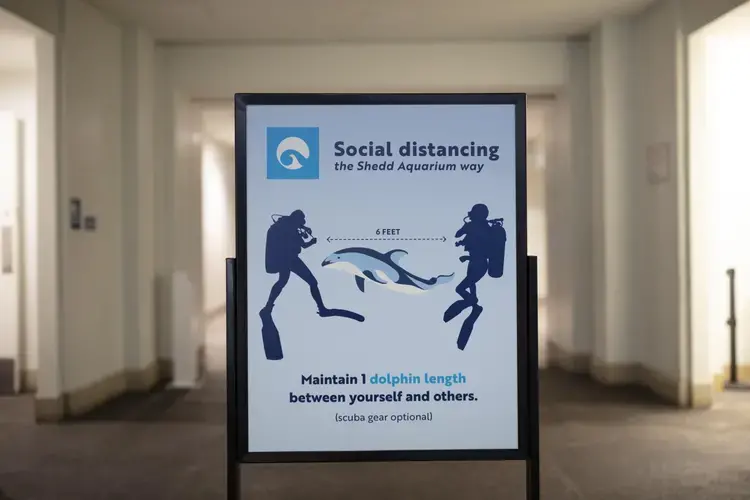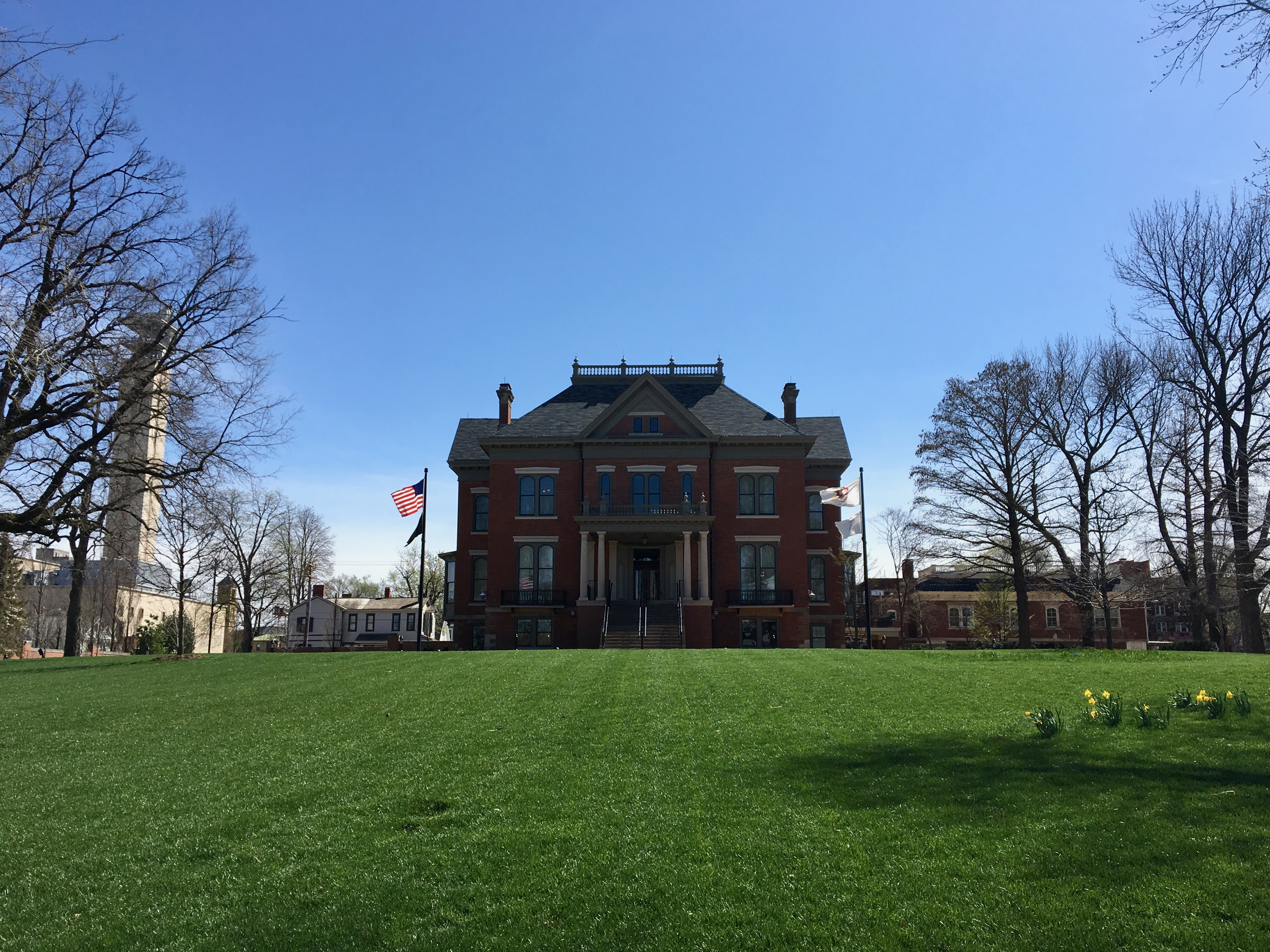
This week, two of Chicago’s most prominent museums will reopen for the first time since mid-March: the Art Institute of Chicago on Thursday, and the Museum of Science and Industry on Saturday. In welcoming back visitors, they join the Shedd Aquarium, which opened on July 3, and the Field and Museum of Contemporary Art, both of which reopened last Friday.
But as they plan for new guests, the MCA and Art Institute have one built-in advantage over the MSI, Field, and Shedd: At art museums, visitors aren’t meant to touch the exhibits.
Science and nature museums, on the other hand, are rife with programming designed for physical interaction: buttons to be pushed, touchscreens to be swiped, levers to be pulled, 3-D glasses to be worn, and aquarium glass bound to have little hands and noses pressed up against it. Part of the appeal of places like the Field, Shedd, and MSI is their immersiveness — the opportunity to get literally hands-on.
Another term for “hands-on” is one many of us have learned amid the coronavirus pandemic: high-touch. Much of the early guidance around mitigating the spread of COVID-19 revolved around reducing our contact with “high-touch” surfaces like doorknobs and handrails, in addition to frequent hand washing and use of hand sanitizer.
As public understanding of the virus has evolved, surface transmission has come to be seen as a less serious driver of infection than person-to-person contact. But according to the World Health Organization, it’s still a likely mode of transmission. So what’s to be done about high-touch museum exhibits?
“It’s a really good question,” says Rob Stein, Shedd’s senior vice president of guest experience and communications. “It was certainly a big part of our planning moving into our reopening.”
Shedd’s decision to reopen as early as it did — just one week after the city entered Phase 4 of Gov. Pritzker’s plan — was informed by the fact that the facility hadn’t totally shut down. “Our work never really stopped, in terms of taking care of the 32,000 animals that live onsite,” Stein said. Approximately 100 of the Shedd’s 435 staffers needed to physically report to work throughout the shutdown to keep the facility running and the animals healthy. As a result, the aquarium has been honing new approaches to sanitation and physical distancing for months.
High-touch surfaces — like that irresistible aquarium glass — are being cleaned frequently throughout the day, and some pieces have been rethought to discourage touching. Digital tablets containing species information, for instance, have been set to a scrolling preset. Two indoor habitats, where visitors can normally reach out and touch sea stars and lake sturgeons, have been made view-only to discourage lingering. But the Stingray Touch experience, which takes place outdoors, is still available, with rigorous hand-washing encouraged before and after.

At the Field Museum, signs that encourage touching of various objects are being covered or taken down, says Ray DeThorne, chief marketing officer. Máximo the Titanosaur, the enormous occupant of Stanley Field Hall, is a prime target for tactile exploration. “People love to touch the leg or the foot of the titanosaur because in most places, you can’t do it,” says DeThorne. “Here you can, because it’s a resin cast, it’s not an actual fossil. But we know kids love to do that, so we’re actually putting a shield around it so that it can’t be touched.”
Certain popular exhibits in the Field’s permanent collection are temporarily closed to avoid physical contact, such as the life-size replica of a Pawnee nation Earth Lodge, “which is made up of all natural materials, and has buffalo hides and other animal hides in it,” DeThorne says. “That would be impossible for us to clean.”
A kid-favorite gross-out moment is off the table for now as well. “There’s a very popular thing we have in the Sue [the T. rex] experience where you can actually put your nose down and smell what Sue’s breath would have smelled like when it was alive,” DeThorne says. “Kids love it, right? Well, we’re covering that up, because that’s just too intimate. We can’t make that a healthy experience.”
The Museum of Science and Industry declined to make a staffer available for an interview ahead of its reopening this weekend, but a spokesperson confirmed that certain high-touch or close-quarters experiences, such as onboard tours of the U-505 submarine, the “working” coal mine, and the Idea Factory kids’ laboratory, will remain closed for the time being.
High-touch areas will be disinfected hourly, MSI says; like the Field and Shedd, it’s following city and state guidelines by operating at no more than 25 percent capacity, installing hundreds of hand sanitizer stations throughout the building, and controlling the flow of traffic throughout the museum to discourage crowding. All three institutions are requiring admission be purchased in advance online, and tickets now have timed entry in order to manage capacity.
Given MSI’s areas of expertise, it wouldn’t be surprising to see its staff finding new, creative solutions to the high-touch problem, just as its fellow institutions have started to do.
“With some of our interactives where you would have used your hand in the past, we’re actually rebuilding them so they have foot pedals,” says the Field’s DeThorne. “If you want to make something happen, rather than having to touch it with your hand, you actually use your foot. It’s all these tiny little things that add up.”
This story was produced in partnership with the Pulitzer Center. For more stories about the effect of COVID-19 on museums, please visit the Prairie State Museums Project at PrairieStateMuseumsProject.org.
COVID-19 Update: The connection between local and global issues–the Pulitzer Center's long standing mantra–has, sadly, never been more evident. We are uniquely positioned to serve the journalists, news media organizations, schools, and universities we partner with by continuing to advance our core mission: enabling great journalism and education about underreported and systemic issues that resonate now–and continue to have relevance in times ahead. We believe that this is a moment for decisive action. Learn more about the steps we are taking.











